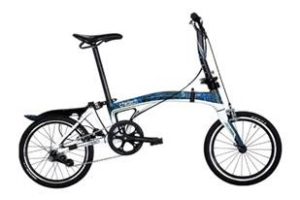Further to Estelle Derclaye’s Kluwer Blog Post, a copy of which can be found here, we take a look at the practical consequences for manufacturers of the recent request for a preliminary ruling from the Court of Justice of the European Union (“CJEU”) by the Belgian Company Court, within copyright infringement proceedings brought by SI (founder of Brompton) and Brompton Bicycle Limited (“Brompton”) against Korean company, Chedech/Get2Get (“Get2Get”).
Brompton has been selling a folding bicycle (the “Brompton bicycle”) since 1987 and previously owned a patent for this design, which recently expired. The key distinctive feature of the Brompton bicycle is that it can be manipulated into three different positions – a folded position, an unfolded position and a stand-by position enabling the bicycle to stay balanced on the ground.
Get2Get markets and sells the “Chedech” bicycle, which is visually very similar to the Brompton bicycle and can also fold into the same three positions.


Brompton brought a copyright infringement claim against Get2Get requesting that Get2Get ceases the infringement of its rights and withdraws its Chedech bicycle from sale.
In its defence, Get2Get contends that the appearance of its Chedech bicycle is dictated by the technical solution sought, which is to ensure that the bicycle can fold into three different positions, meaning that the design can only be protected under patent law. Brompton’s response is that the three positions of the Brompton bicycle can be obtained through other shapes, meaning that its appearance is protected by copyright.
Under Belgian law, any creation is protected by copyright when it is expressed in a particular shape and is original, which could include a utilitarian object, such as a bicycle. In that regard, although shapes necessary to obtain a technical result are excluded from copyright protection, doubt arises when such a result can be obtained by means of other shapes also.
The Belgian Court stayed these proceedings and referred the following questions to the CJEU:-
- Must Directive 2001/29 be interpreted as excluding from copyright protection works whose shape is necessary to achieve a technical result?
- In order to assess the above, must account be taken of:
- The existence of other possible shapes which allow the same technical result to be achieved?
- The effectiveness of the shape in achieving that result?
- The intention of the alleged infringer?
- The existence of an earlier, now expired, patent?
The CJEU confirmed that Articles 2 to 5 of Directive 2001/29 must be interpreted as meaning that copyright protection applies to a product whose shape is, at least in part, necessary to obtain a technical result, where that product is an original work resulting from intellectual creation. The CJEU then stated that it is for the Belgian Court to verify this, bearing in mind all aspects of the main dispute.
With regards to the second question, the CJEU stated that it is only the originality of the product concerned that needs to be assessed. The existence of other possible shapes which can achieve the same technical result is not decisive. Likewise, the intention of the alleged infringer is irrelevant.
The existence of an earlier, now expired, patent in the case and the effectiveness of the shape in achieving the same technical result, should be taken into account only in so far as they make it possible to reveal what was considered when choosing the shape of the product concerned.
This preliminary ruling could have interesting consequences for manufacturers producing utilitarian products within the EU. It suggests that once a patent for such a product has expired, they may still be able to protect it under copyright law, if able to demonstrate that it is an original work resulting from intellectual creation. A patent provides a fixed monopoly right for 20 years, whereas copyright protection can last for up to 70 years after the author’s death, depending on the work claimed, protecting the product for far longer. Copyright could also be an effective means of extending any design right owned in relation to such a product. This decision highlights the importance of considering all forms of intellectual property rights when looking to protect a product, although it remains to be seen whether the UK Court will adopt a similar approach, as cases such as Lucasfilm v Ainsworth, demonstrate their reluctance to protect such utilitarian products through copyright.
_____________________________
To make sure you do not miss out on regular updates from the Kluwer Trademark Blog, please subscribe here.


